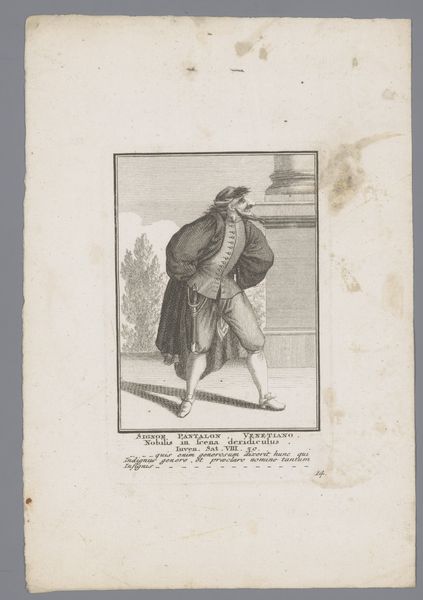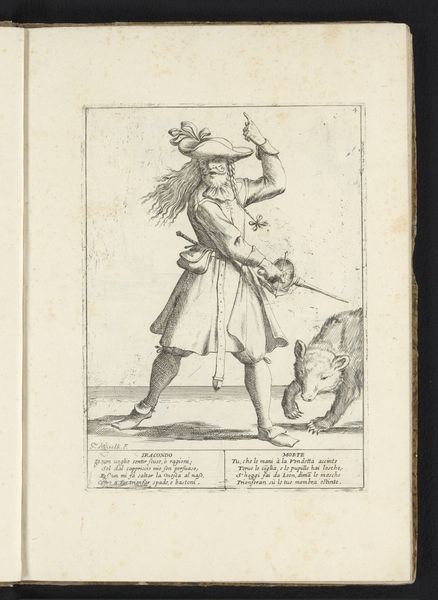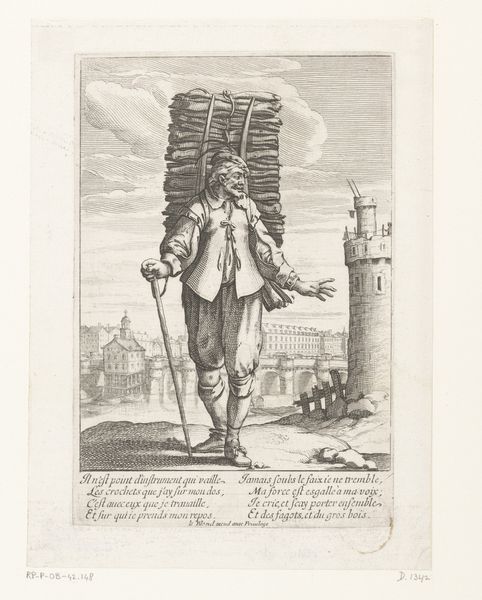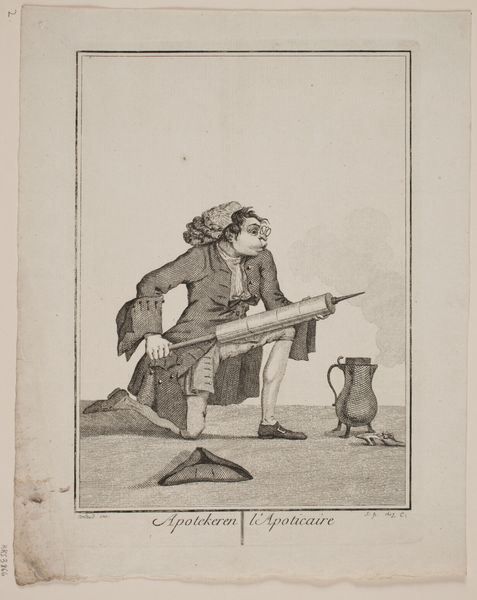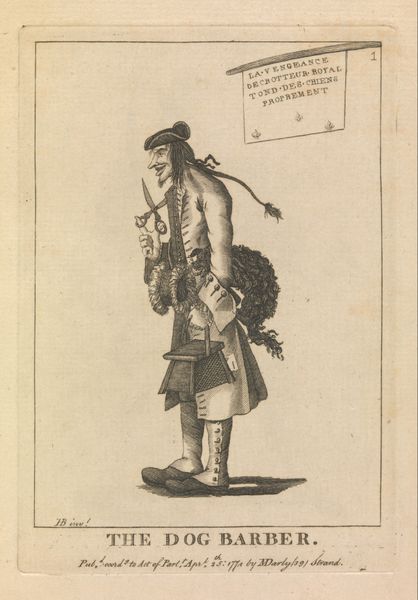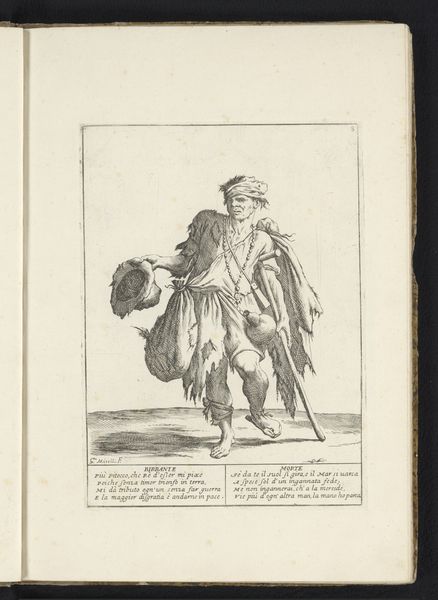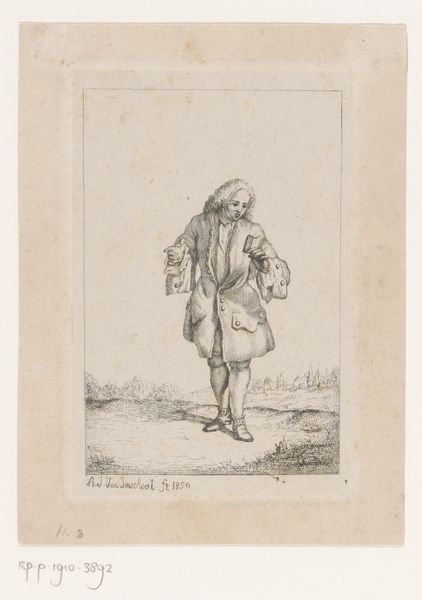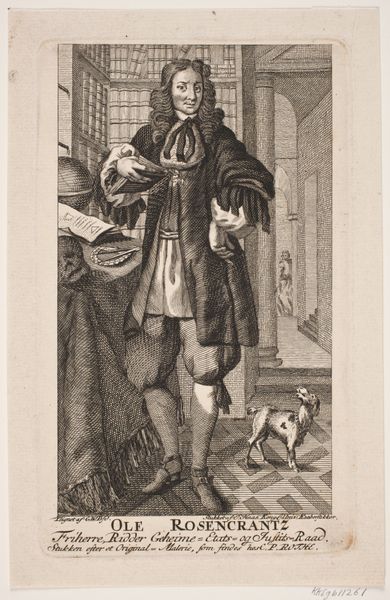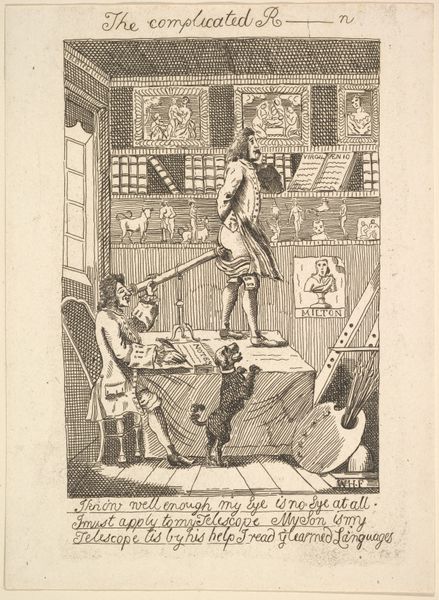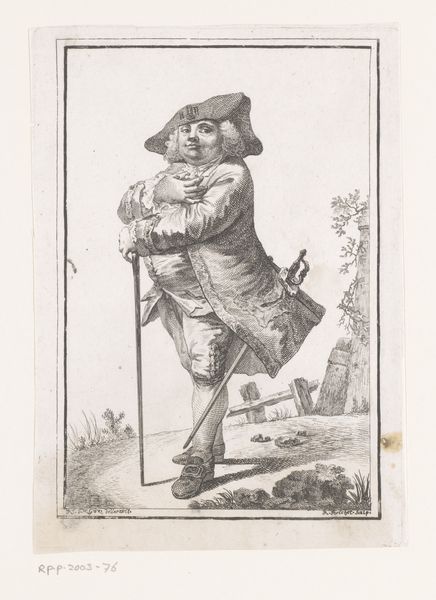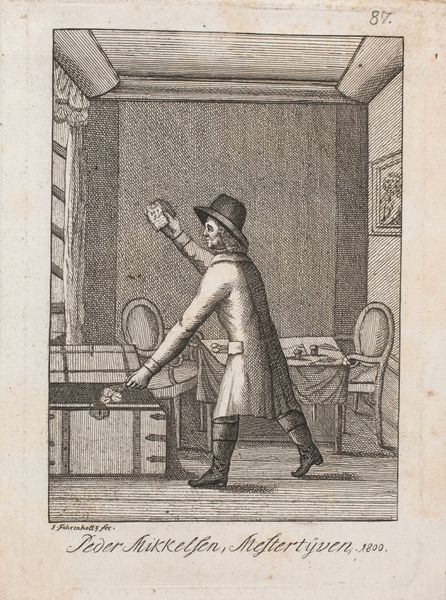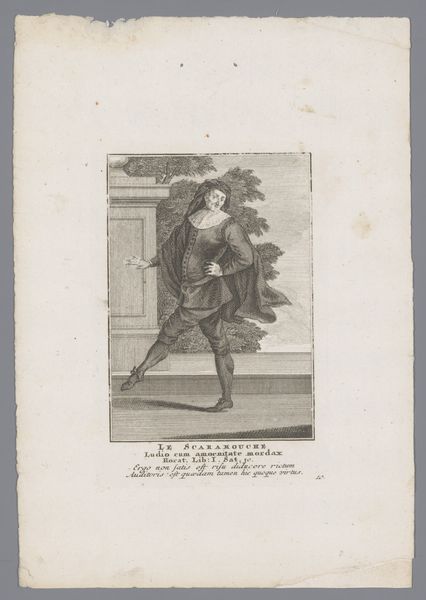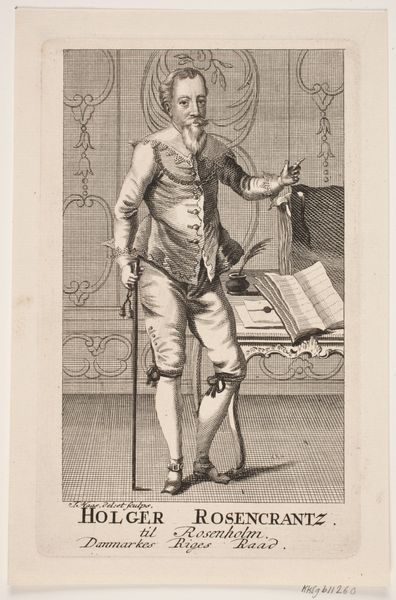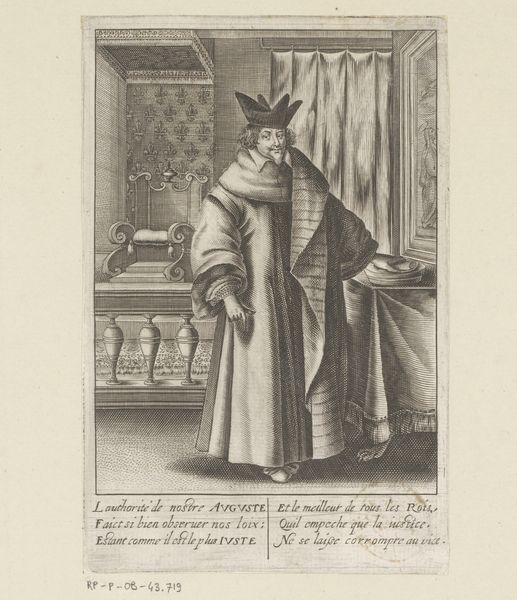
drawing, print, etching, engraving
#
drawing
# print
#
etching
#
old engraving style
#
romanticism
#
genre-painting
#
engraving
Dimensions: height 169 mm, width 127 mm
Copyright: Rijks Museum: Open Domain
Curator: This is "Portret van Theodora de Verdion voor de etalage van een boekhandel," dating from around 1790-1795. It's an engraving, and it looks like it was published within a magazine called "Wonderful Magazine". Editor: It’s striking how much detail the artist was able to achieve through engraving! There's almost a whimsical quality to the figure of the bookseller. He seems burdened by the weight of knowledge, doesn't he? Curator: He does. I'm particularly interested in the layers of production here. This wasn't simply art for art's sake. It was commercial, meant to accompany a magazine. That intersection between art and consumerism shapes the artistic process itself, affecting subject matter and form. Editor: Exactly! The positioning of the bookseller near the shop window raises interesting questions about literacy, access to knowledge, and class divisions in late 18th-century society. His entire persona as a traveling purveyor hints at the complex web of economic and intellectual exchanges. Curator: I agree. Think about the role of printed material then. Producing and distributing these images became industrial processes. How many copies were printed, how did this image circulate, and who ultimately had access to it? That reveals larger issues. Editor: And the text beneath the image offers so much. A teacher, a doctor, a connoisseur... is he all of those things at once? It invites us to interrogate the power dynamics inherent in the exchange of books and ideas, as well as notions of masculinity within this framework. The inscription positions the itinerant seller as an accessible intellectual for the readers. Curator: Right. And given this was a reproducible medium intended for circulation with "Wonderful Magazine," who was their target audience, and how did this portrait market the education they purported to sell through publishing ventures like theirs? It suggests something broader than just a bookshop transaction. Editor: Seeing art embedded within everyday commodities—a magazine, here—is a really effective lens for understanding cultural values. Curator: Absolutely. Looking at the material and conditions that make such an image possible allows for insight into labor practices, printmaking techniques, and its consumer environment, which contextualize and deepen an appreciation. Editor: Considering these aspects has expanded the picture. Instead of simply seeing an interesting figure, we see him as situated in broader societal conversations.
Comments
No comments
Be the first to comment and join the conversation on the ultimate creative platform.
